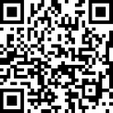主动转运是一种细胞膜上的物质运输方式,它与被动转运不同之处在于需要消耗能量。这种能量主要来源于两种形式:ATP(腺苷三磷酸)和离子梯度。
1. ATP直接供能的主动转运:这是最常见的一种方式,细胞通过水解ATP分子释放出的能量来驱动特定蛋白质泵的工作,将物质从低浓度一侧向高浓度一侧转运。例如钠钾泵(Na /K -ATPase),它每消耗一个ATP分子可以将3个钠离子排出细胞外,并同时将2个钾离子带入细胞内。
2. 通过离子梯度间接供能的主动转运:这种方式又称为协同运输或共运输,利用已有的离子浓度差作为驱动力。例如葡萄糖在小肠上皮细胞中的吸收过程就是借助于钠离子顺其电化学梯度进入细胞的同时将葡萄糖分子带入细胞内,这个过程中并没有直接消耗ATP,而是依靠之前通过钠钾泵建立起来的钠离子浓度梯度来完成。
总之,在主动转运中,无论是直接还是间接的方式,最终的能量来源都与ATP密切相关。在生理条件下,ATP是生物体内最普遍存在的能量载体,能够迅速响应细胞内外环境变化并提供所需的能量支持。
1. ATP直接供能的主动转运:这是最常见的一种方式,细胞通过水解ATP分子释放出的能量来驱动特定蛋白质泵的工作,将物质从低浓度一侧向高浓度一侧转运。例如钠钾泵(Na /K -ATPase),它每消耗一个ATP分子可以将3个钠离子排出细胞外,并同时将2个钾离子带入细胞内。
2. 通过离子梯度间接供能的主动转运:这种方式又称为协同运输或共运输,利用已有的离子浓度差作为驱动力。例如葡萄糖在小肠上皮细胞中的吸收过程就是借助于钠离子顺其电化学梯度进入细胞的同时将葡萄糖分子带入细胞内,这个过程中并没有直接消耗ATP,而是依靠之前通过钠钾泵建立起来的钠离子浓度梯度来完成。
总之,在主动转运中,无论是直接还是间接的方式,最终的能量来源都与ATP密切相关。在生理条件下,ATP是生物体内最普遍存在的能量载体,能够迅速响应细胞内外环境变化并提供所需的能量支持。

学员讨论(0)
相关资讯







![[em2_01]](https://live.cdeledu.com/web/images/emoji/01.png)
![[em2_02]](https://live.cdeledu.com/web/images/emoji/02.png)
![[em2_03]](https://live.cdeledu.com/web/images/emoji/03.png)
![[em2_04]](https://live.cdeledu.com/web/images/emoji/04.png)
![[em2_05]](https://live.cdeledu.com/web/images/emoji/05.png)
![[em2_06]](https://live.cdeledu.com/web/images/emoji/06.png)
![[em2_07]](https://live.cdeledu.com/web/images/emoji/07.png)
![[em2_08]](https://live.cdeledu.com/web/images/emoji/08.png)
![[em2_09]](https://live.cdeledu.com/web/images/emoji/09.png)
![[em2_10]](https://live.cdeledu.com/web/images/emoji/10.png)
![[em2_11]](https://live.cdeledu.com/web/images/emoji/11.png)
![[em2_12]](https://live.cdeledu.com/web/images/emoji/12.png)
![[em2_13]](https://live.cdeledu.com/web/images/emoji/13.png)
![[em2_14]](https://live.cdeledu.com/web/images/emoji/14.png)
![[em2_15]](https://live.cdeledu.com/web/images/emoji/15.png)
![[em2_16]](https://live.cdeledu.com/web/images/emoji/16.png)
![[em2_17]](https://live.cdeledu.com/web/images/emoji/17.png)
![[em2_18]](https://live.cdeledu.com/web/images/emoji/18.png)
![[em2_19]](https://live.cdeledu.com/web/images/emoji/19.png)
![[em2_20]](https://live.cdeledu.com/web/images/emoji/20.png)



















 扫一扫立即下载
扫一扫立即下载


